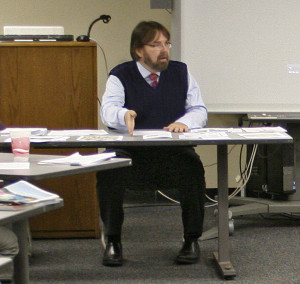By: Kevin Slimp
Why are some newspapers showing incredible circulation increases?
I had to laugh a few days ago, when I saw my pic on the top fold of the front page of a monthly industry pub with the headline, “Slimp’s invention has served newspaper industry for 20 years.”
I’ve got to tell you. I don’t know where those years went. Back in those days, it seemed like everybody introduced me as the “young whiz kid” of the newspaper industry when I stepped on stage at a convention. In those early days, it seemed
like everyone wanted me to speak about where I came up with the idea for using PDFs to print newspapers and transmit ads. My first speaking gig was keynoting the Texas Press Association Convention. I remember having the flu and barely making it downstairs to speak.
When discussing the steps that led to newspapers using PDFs, my most popular line was, “I don’t know. It seemed like it ought to work.”
You know, most great discoveries in life and business seem to boil down to common sense. As I write this column, I’ve just returned from Nashville, where I met with a group of publishers from Middle and West Tennessee. Metros, small dailies and non-dailies were represented.
When I lead something like this, I become a statistic junkie for days before, as I study every stat I can get my hands on. Two statistics struck me as very interesting as I prepared for this summit.
The first was a study released by Pew Research Center, indicating just how little most social media sites, other than Facebook, are actually used by anyone. My best friend, Ken, who is a marketing guru in Dallas, had me convinced that it was time to throw away Facebook, paper and all my other resources because the world, as he had described it, had turned to Instagram and Twitter. Well I certainly know now, thanks to this study, that compared to print and Facebook, Instagram and Twitter are used by just a small portion of the population. I was especially surprised at how few teens used Instagram, after Ken almost had me drinking the Kool-Aid.
More surprising to me, however, were the most recent statistics from the Alliance for Audited Media, formerly known as ABC, showing the circulation of the 25 largest metro papers in the country. You may be wondering why I’m writing a column, primarily read by community newspaper publishers, about metro circulation. Just follow along for a little while longer.
How’s this for a surprising number? The Atlanta Journal Constitution had a huge increase in circulation. That’s not a misprint. According to the AAM report, they grew from 174,000 subscribers to 231,000 in one year. And the Orange County Register, the same paper I predicted would have huge growth, grew 27 percent, from 280,000 subscribers to 356,000.
I know what you’re thinking, “It’s those digital subscribers.” But guess what? Atlanta’s total digital circulation sits at 6,000, while Orange County’s sits at 15,000. Yes, less than 5 percent of total circulation for both.
So why do I even bother you with this stuff? Because, my friends, print is alive and well. We keep hearing that community papers, as a whole, are doing well this year. But we also keep hearing that the big papers are dying, which – in turn – means that we’re all going with them.
That whole mess in New Orleans and other Newhouse cities has caused the whole nation to believe the sky is falling. But guess what. It’s not. More newspapers than the naysayers would like us to believe are doing very well. Sure, some aren’t. But many are. I believe that’s always been the case.
Last night, I spoke with someone from Associated Press about these numbers. She was quite surprised to hear them. So much so, that she asked me to send her the handouts we used at the summit, so she could see them for herself.
What did I discuss with these publishers in Nashville? I reminded them that their future is bright, if they’ll resist the lure of the “print is dead” philosophy and keep producing quality publications.
You know, there are groups that don’t invite me to speak anymore because I refuse to say that we should all abandon print. But I remember when I was working on the PDF project 20 years ago. It seemed that everybody, including Adobe, said it would never work. Only a few close colleagues believed that we would ever transmit and print files in a method we take for granted today.
But common sense told me they were wrong. And common sense tells me that statistics don’t lie. Our newspapers have a bright future. Hold on for the ride.

